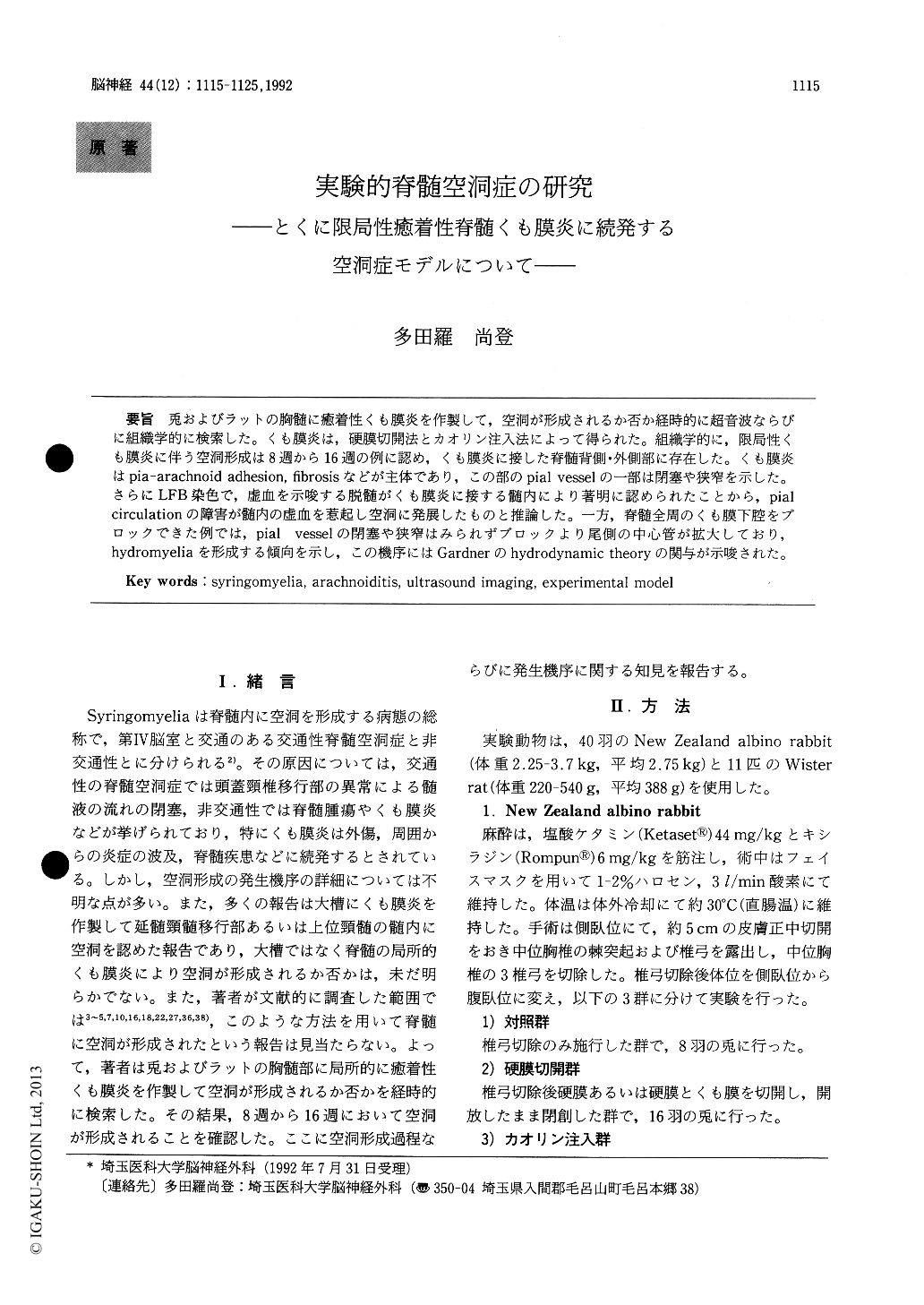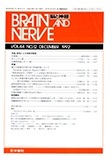Japanese
English
- 有料閲覧
- Abstract 文献概要
- 1ページ目 Look Inside
兎およびラットの胸髄に癒着性くも膜炎を作製して,空洞が形成されるか否か経時的に超音波ならびに組織学的に検索した。くも膜炎は,硬膜切開法とカオリン注入法によって得られた。組織学的に,限局性くも膜炎に伴う空洞形成は8週から16週の例に認め,くも膜炎に接した脊髄背側・外側部に存在した。くも膜炎はpia-arachnoid adhesion,fibrosisなどが主体であり,この部のpial vesse1の一部は閉塞や狭窄を示した。さらにLFB染色で,虚血を示唆する脱髄がくも膜炎に接する髄内により著明に認められたことから,pialcirculationの障害が髄内の虚血を惹起し空洞に発展したものと推論した。一方,脊髄全周のくも膜下腔をブロックできた例では,pial vesselの閉塞や狭窄はみられずブロックより尾側の中心管が拡大しており,hydromyeliaを形成する傾向を示し,この機序にはGardnerのhydrodynamic theoryの関与が示唆された。
In order to produce syringomyelia, localized ara-chnoiditis was created in adult New Zealand alblino rabbits and Wister rats by the injection of kaolin into the thoracic spinal subarachnoid space and incision of the dura mater of the thoracic spinal cord.
The rabbits and rats were divided into 3 groups ; the control group, dural incision group (DG) and kaolin injection group (KG). Each rabbit was sacrificed at 4, 8, 12 and 16 weeks after the opera-tion. Each rat was sacrificed at 8 and 16 weeks after the operation. Cavity formation in the cord of all rabbits was examined by ultrasound. All animals were perfused with 10% neutral beffered formalin at 150 cm H2O pressure, and histological examination was performed with Luxol fast blue (LFB) and hematoxylin and eosin (H&E) stains.
Results obtained :
(1) Cavity formation was noted in 6 of 16 DG of rabbit (37.5%), 5 of 16 KG of rabbit (31.2%) and 2 of 9 KG of rat (22.2%) with histological verification. With use of ultrasound, cavity was noted in 3 of 16 DG rabbits (12.5%) and 2 of 16 KG rabbits (18.8%).
(2) Cavity formation was present in the cord adjacent to the marked adhesive arachnoiditis both in rabbits and in rats.
(3) Cavity was noted in the ischemic area.
(4) In 2 rabbits in which kaolin encircled whole surface of the spinal cord, hydromyelia was formed communicating with enlarged central canal caudad from the kaolin subarachnoid block.
(5) Histological examination showed obliteration or narrowing of lumen of the small pial vessels involved in the adhesive arachnoiditis. In the cord parenchyma adjacent to the arachnoiditis, multiple spots of demyelination due secondary to ischemia demonstrated by LFB stain were noted. On the other hand, in the cord with the pia-arachnoid remained uninvolved, no demyelination was obser-ved.
(6) Localized adhesive arachnoiditis consisted of proliferation of fibrous tissue, lymphocytic infiltration and obliterating processes of small pial vessels involved in it.
These data suggest that the cavitation within the cord would be induced by the ischemia, and hydromyelia would be produced by the pressure dissociation between the spinal subarachnoid space and the central canal.

Copyright © 1992, Igaku-Shoin Ltd. All rights reserved.


